Scientific tent: playing science
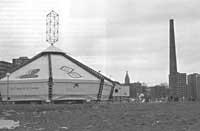
Those responsible for this action had prepared a dossier for journalists, but as our curiosity was more important, we went to seek a personal relationship. We immediately discovered his most responsible, Mr. Carles Schnabel. Biologist of studies, his real profession is scientific disclosure. We have put together what this man said and if you find it interesting, the reader can see it in Pamplona in June.
The Scientific Tent is basically responding to a need. At the Science Museum in Barcelona long ago they realized that many of the visitors came from outside Catalonia. Although in Europe there are many science museums, in the Iberian peninsula the same does not happen. Here, except in Barcelona and A Coruña, there is no scientific museum. Luis Utrilla, former head of the exhibition at the Barcelona Science Museum, began five years ago to materialize the idea of the Science Tent.
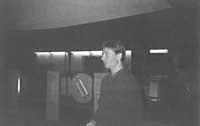
Before moving on, it must be said that the science museum in Barcelona is not an ordinary museum. In ordinary museums, the things shown are to be seen and not to be touched. In this Museum of Science the different themes are divided into modules and, in addition, it has been thought that when the design of these modules has been made they are presented in a tactile way. Therefore, visitors to this museum play experimenting modules.
Of course, the possibilities offered by this type of science museums are enormous. And the clientele can be made up of young people or adults, flavors and ignorant.
But let's go back to the story. In the spring of last year the definitive design of the tent was made. Soon they began to build beams and structures that would hold the Tent and at the end of the summer for the first time all the pieces were joined forming the Scientific Tent.
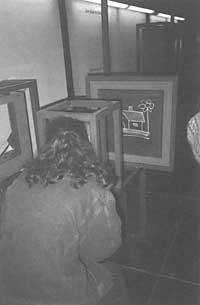
It is a tent, a detachable metal structure and a pavilion covered with awnings. The plant is octagonal and has 9.53 m per side. In the center is a square space on which stands a tower of 23 m. On both sides there are two containers to enter and exit the tent.
The design of this structure has taken into account the winds of 140 km/h and the possible snow loads of the most important cities at less than 900 m of altitude. The main tower rests on four columns. Each column has three tanks of 1,500 liters of volume. These tanks are joined with water to stabilize the structure. The awning and wood used are not burned and disabled access is also available. The total covered area is 542 square meters and the one used to show the modules is 439.90 square meters.
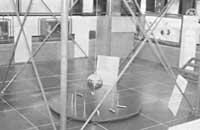
The inauguration of the Carpa de las Ciencias took place on 19 December in Madrid, but, as Carles told us, it was less successful than expected, since the bureaucracy entered the gap. Subsequently they moved to Santander and Bilbao and their influence on the people has been increasing. As an example, although they went to Bilbao for a month, they have finally had to spend a couple of months. As for the clientele, it must be said that most have been schoolchildren, since every day 25 groups of 35 students have passed.
In the tent there are only 56 modules, it should be noted that in the science museum of Barcelona there are about 300. But, as Les told us, to transport the tent and its 56 modules need 9 trucks. Therefore, it is practically impossible to transport the entire scientific museum of Barcelona.
The main topics covered in the modules are: perception, optics, waves, earth, mechanics, electrostatics, computer science and weather station.
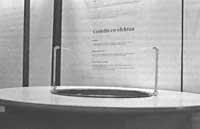
Other activities are organized next to the Science Tent. In the Autonomous Community of the Basque Country, for example, according to an agreement signed between the Basque Government and Caixa, numerous exhibitions have been organized on different topics. Holography, time and watches, symmetry, brain, etc. have been the themes of these exhibitions.
We also asked Les about financial sources. Although the Science Museum of Barcelona (and therefore the Scientific Tent) was born from inside Caixa, its social objective is more than economic. The costs of creating the Scientific Tent will not be recovered, but when they circulate in the cities they will try to recover, at least, the expenses that originate in it, either by putting price to the entrance or reaching an agreement with the local public administration.
There is also a space for teachers within the functions organized by the Scientific Tent. In Bilbao, for example, the event called Cultural Resources for Scientific Education was organized. It analyzed the resources and possibilities of scientific dissemination. Elhuyar also participated.

And how is people's attitude to these actions? Les' answer was: At first people move from one place to another, but when they start to focus they start reading the guides and panels that we have placed and finally each one performs their sessions in the modules that they like the most. In the case of students, according to the environment created by the teacher, a great difference between groups is appreciated.
Before we finish this article, we want to make an idea known. As in Euskal Herria there is more scientific and technical environment than elsewhere, is it not time to start building our science museum? We must thank Mikel Agirregabiria, from the Department of Culture of the Basque Government, for the presence of the Science Tent in the Basque Country, but we know that his idea is to carry out a science museum. He told us that we have to prepare the environment. Carlos also told us the same thing. And we, reader, propose to create an environment.





